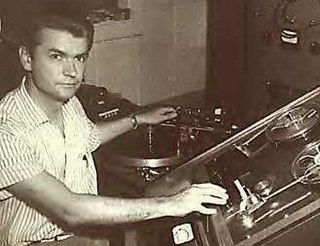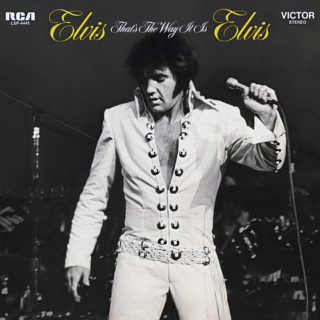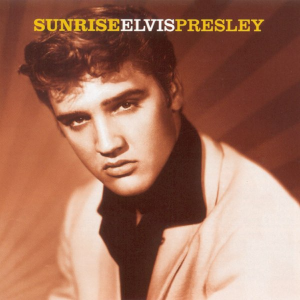
Samuel Cornelius Phillips was an American disc jockey, songwriter and record producer. He was the founder of Sun Records and Sun Studio in Memphis, Tennessee, where he produced recordings by Elvis Presley, Roy Orbison, Jerry Lee Lewis, Carl Perkins, Johnny Cash, and Howlin' Wolf. Phillips played a major role in the development of rock and roll during the 1950s, launching the career of Presley. In 1969, he sold Sun to Shelby Singleton.

Jerry Lee Lewis was an American pianist, singer and songwriter. Nicknamed "The Killer", he was described as "rock 'n' roll's first great wild man". A pioneer of rock and roll and rockabilly music, Lewis made his first recordings in 1952 at Cosimo Matassa's J&M Studio in New Orleans, Louisiana, and early recordings in 1956 at Sun Records in Memphis, Tennessee. "Crazy Arms" sold 300,000 copies in the Southern United States, but it was his 1957 hit "Whole Lotta Shakin' Goin' On" that shot Lewis to worldwide fame. He followed this with the major hits "Great Balls of Fire", "Breathless", and "High School Confidential".

Sun Records is an American independent record label founded by producer Sam Phillips in Memphis, Tennessee on February 1, 1952. Sun was the first label to record Elvis Presley, Charlie Rich, Roy Orbison, Jerry Lee Lewis, Carl Perkins, and Johnny Cash. Prior to that, Sun had concentrated mainly on African-American musicians because Phillips loved rhythm and blues and wanted to bring it to a white audience.

Winfield Scott Moore III was an American guitarist who formed The Blue Moon Boys in 1954, Elvis Presley's backing band. He was studio and touring guitarist for Presley between 1954 and 1968.

Rockabilly is one of the earliest styles of rock and roll music. It dates back to the early 1950s in the United States, especially the South. As a genre, it blends the sound of Western musical styles such as country with that of rhythm and blues, leading to what is considered "classic" rock and roll. Some have also described it as a blend of bluegrass with rock and roll. The term "rockabilly" itself is a portmanteau of "rock" and "hillbilly", the latter a reference to the country music that contributed strongly to the style. Other important influences on rockabilly include western swing, boogie-woogie, jump blues, and electric blues.

"Hound Dog" is a twelve-bar blues song written by Jerry Leiber and Mike Stoller. Recorded originally by Big Mama Thornton on August 13, 1952, in Los Angeles and released by Peacock Records in late February 1953, "Hound Dog" was Thornton's only hit record, selling over 500,000 copies, spending 14 weeks in the R&B charts, including seven weeks at number one. Thornton's recording of "Hound Dog" is listed as one of the Rock and Roll Hall of Fame's "500 Songs That Shaped Rock and Roll", ranked at 318 in the 2021 iteration of Rolling Stone's 500 Greatest Songs of All Time and was inducted into the Grammy Hall of Fame in February 2013.

The Sun Sessions is a compilation album by American singer Elvis Presley, issued by RCA Records in 1976. The album contains Presley's earliest commercial recordings, made in Memphis, Tennessee, for Sun Records in 1954 and 1955. RCA issued the album in the UK in 1975 under the title The Sun Collection. The album features liner notes by Roy Carr of the New Musical Express. The Sun Sessions features most of the tracks Elvis recorded for Sun Records and produced by Sam Phillips, the head of Sun Studios. The Sun Sessions reached number two on the Billboard Country Albums and number 1 on the Cashbox Country Albums charts.

Sun Studio is a recording studio opened by rock-and-roll pioneer Sam Phillips at 706 Union Avenue in Memphis, Tennessee, on January 3, 1950. It was originally called Memphis Recording Service, sharing the same building with the Sun Records label business. The Sun label that was housed within the studio played a large role in Elvis Presley's early career.

"Million Dollar Quartet" is a recording of an impromptu jam session involving Elvis Presley, Jerry Lee Lewis, Carl Perkins, and Johnny Cash made on December 4, 1956, at the Sun Record Studios in Memphis, Tennessee. An article about the session was published in the Memphis Press-Scimitar under the title "Million Dollar Quartet". The recording was first released in Europe in 1981 as The Million Dollar Quartet with 17 tracks. A few years later more tracks were discovered and released as The Complete Million Dollar Session. In 1990, the recordings were released in the United States as Elvis Presley: The Million Dollar Quartet. This session is considered a seminal moment in rock and roll.

Elvis' Golden Records is a compilation album by American rock and roll singer Elvis Presley, issued by RCA Victor in March 1958. It compiled his hit singles released in 1956 and 1957, and is widely believed to be the first greatest hits album in rock and roll history. It is the first of five RCA Victor Elvis' Golden/Gold Records compilations, the first four of which were issued during Presley's lifetime. The album peaked at number three on the Billboard Top Pop Albums chart and was certified 6× platinum on August 17, 1999, by the Recording Industry Association of America.

Elvis' Gold Records Volume 4 is a greatest hits album by American rock and roll singer Elvis Presley, issued by RCA Victor in mono and stereo, LPM/LSP 3921, in January 1968, with recording sessions taking place over an eight-year span at RCA Studio B in Nashville, Tennessee, and at RCA Studios and Radio Recorders in Hollywood. It is a compilation of hit singles released between 1961 and 1967, peaking at number 33 on the Billboard 200. It was certified Gold on March 27, 1992, by the Recording Industry Association of America.

That's the Way It Is is the twelfth studio album by American singer and musician Elvis Presley, released on RCA Records, LSP 4445, in November 1970. It consists of eight studio tracks recorded at RCA Studio B in Nashville, and four live in-concert tracks recorded at The International Hotel in Las Vegas. It accompanied the theatrical release of the documentary film Elvis: That's the Way It Is, although it is not generally considered a soundtrack album. The album peaked at number 21 on the Billboard 200 and at number eight on the country chart. It was certified Gold on June 28, 1973, by the Recording Industry Association of America and up-graded to Platinum, for sales of a million copies on March 8, 2018.

Sunrise is a two-disc compilation of Elvis Presley's studio recordings at Sun Studio from 1953 to 1955, released in 1999, RCA 67675-2. This set features all of the surviving master recordings made by Presley and his accompanists, Scotty Moore and Bill Black, occasionally augmented by other musicians, prior to his arrival on RCA Records in 1956.

"I Forgot to Remember to Forget" is a 1955 rockabilly and country song, first recorded by Elvis Presley and written by Stan Kesler and Charlie Feathers. It was Elvis' first no. 1 record nationally. The single was the fifth and final single released on Sun Records before Elvis moved to RCA Records.

Elvis at Sun is a compact disc compilation of Elvis Presley's studio recordings at Sun Studio from 1954 to 1955, released in June 2004, BMG Heritage 61205. This set features master recordings made by Presley and his accompanists, Scotty Moore and Bill Black, occasionally augmented by other musicians, prior to his arrival on RCA Records in early 1956.

Beyond the Sun is the eleventh studio album by Chris Isaak, released through Vanguard Records on October 18, 2011. It is a collection of songs recorded by Sun Records artists Elvis Presley, Johnny Cash, Roy Orbison, Carl Perkins and Jerry Lee Lewis. Some of the songs were originally released on Sun Records. The record itself was recorded at Sun Studio, Memphis, Tennessee and the cover photograph was taken by Sheryl Louis outside the studio on Union Avenue.

"Birth of Rock and Roll" is a 1986 song written by Carl Perkins and Greg Perkins. The song was featured on the Class of '55 album which included performances with Johnny Cash, Roy Orbison, and Jerry Lee Lewis. "Birth of Rock and Roll" was released as a 7" single with a picture sleeve, 885 760–7, on the Smash/America label copyrighted by PolyGram Records produced by Chips Moman. The single reached No. 31 on the Billboard country chart and No. 44 on the Canadian country chart in 1986. The B side was "Rock and Roll (Fais-Do-Do)" which featured Johnny Cash, Jerry Lee Lewis, and Roy Orbison. The theme of the song “Birth of Rock and Roll" is about how "Memphis gave birth to rock and roll" in the 1950s at Sun Records. A video of the song was also made featuring Carl Perkins, Jerry Lee Lewis, and Ronnie Wood of The Rolling Stones as they drove to the historic Sun studios in Memphis, Tennessee in a white Cadillac convertible.

She Even Woke Me Up to Say Goodbye is the 13th album by pianist and singer Jerry Lee Lewis. It was released on Mercury Records in 1970.

Country Class is an album by Jerry Lee Lewis, released on Mercury Records in 1976. Cam Mullins was credited for the string and horn arrangements on "Let's Put It Back Together", "Jerry Lee's Rock & Roll Revival Show" and "The Closest Thing to You".



















